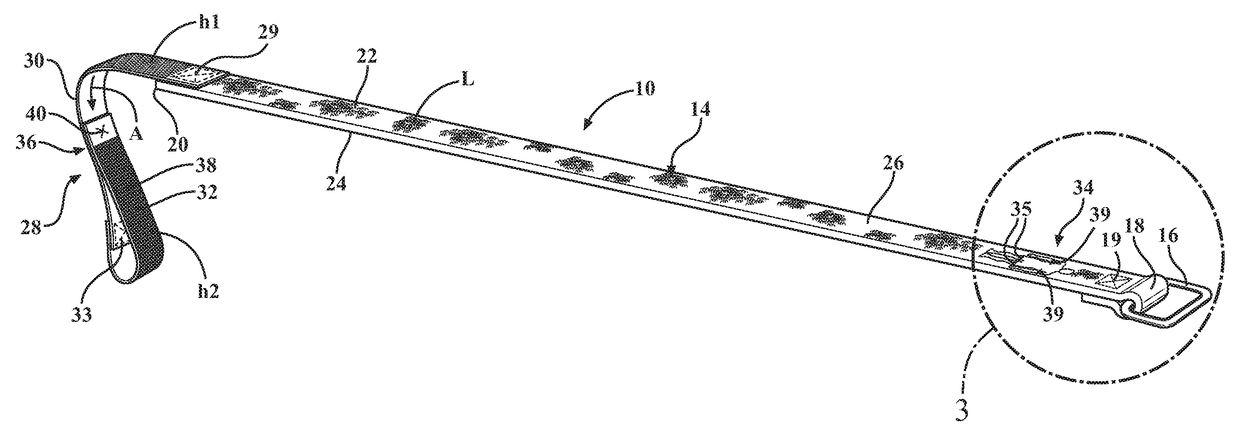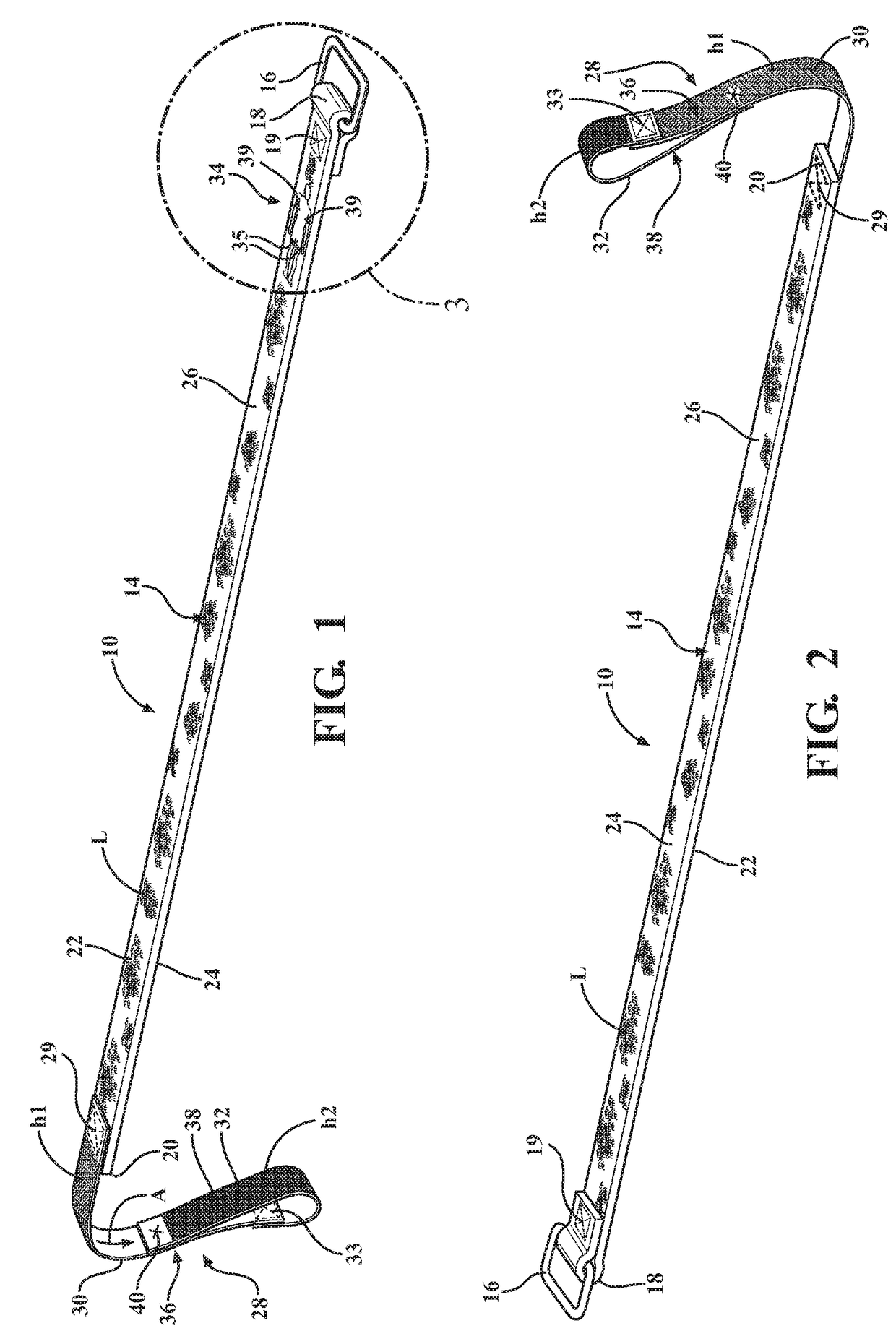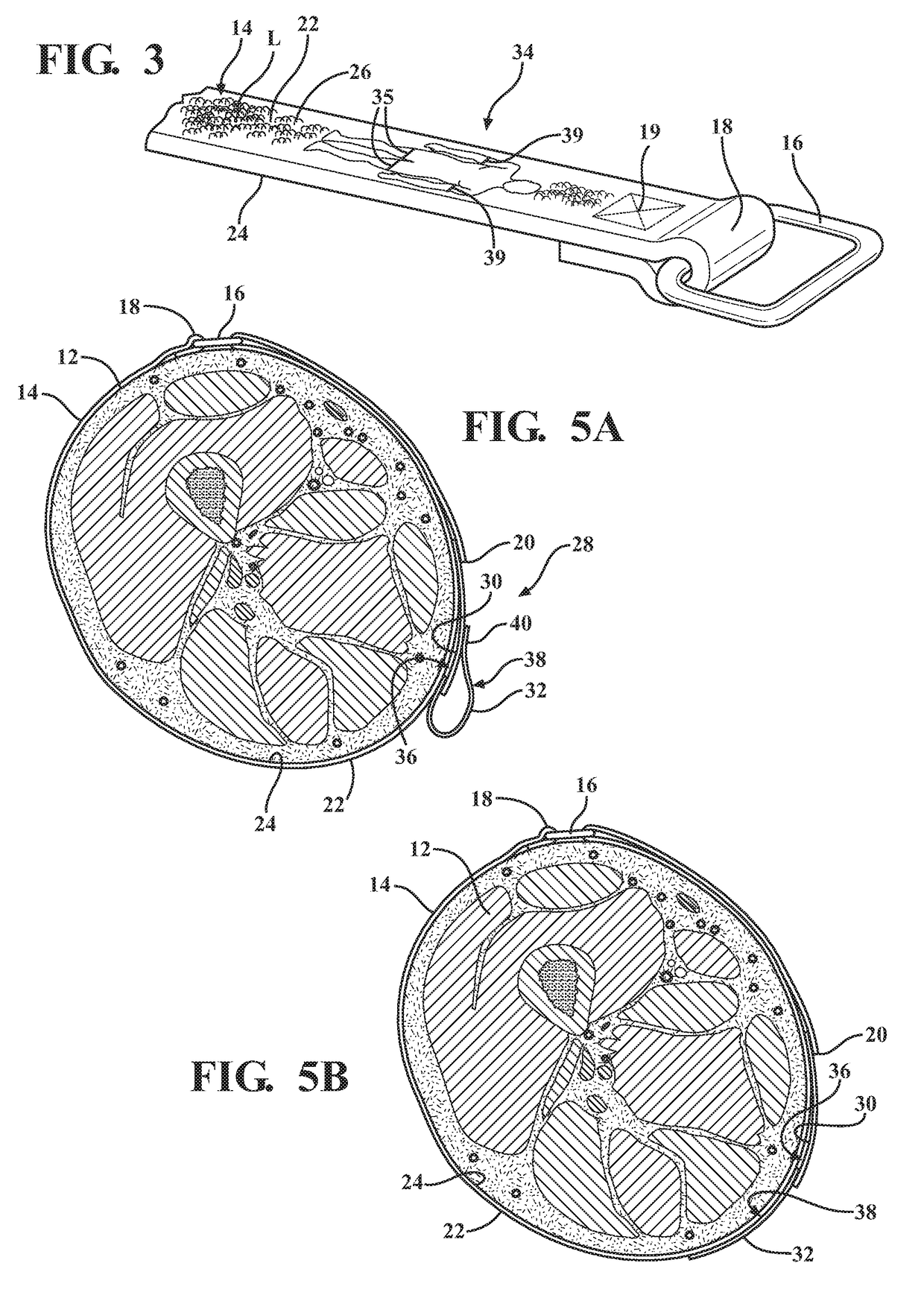Tourniquet and methods of use and construction thereof
a technology of tourniquets and rigid parts, applied in the field of tourniquets, can solve the problems of occupying as much space as the rigid member(s) need, affecting the use, and affecting the safety of the rigid member, etc., and achieves the effect of being readily availabl
- Summary
- Abstract
- Description
- Claims
- Application Information
AI Technical Summary
Benefits of technology
Problems solved by technology
Method used
Image
Examples
Embodiment Construction
[0041]Referring in more detail to the drawings, FIGS. 1, 2 and 4 illustrate a tourniquet 10, constructed in accordance with one aspect of the invention, for occluding the flow of blood in an injured limb 12. The tourniquet 10 includes a strap 14 of flexible, highly inelastic material having an annulus 16, such as a closed or substantially closed loop of metal or polymeric material fixed at a first end18, such as via a stitching 19 or otherwise, as desired, and having an opposite second end 20 extendible through the annulus 16 to enable the strap 14 to be wrapped about the injured limb 12 in need of a tourniquet. The strap 14 has opposite sides 22, 24 with at least one side, and preferably both sides 22, 24 having a hook or loop fastener portion, constructed as a loop fastener portion 26, having a plurality of loops (L), in a preferred embodiment. A fastener assembly 28 is fixed to the second end 20 of the strap 14, such as via a stitching 29 or otherwise, as desired. The fastener as...
PUM
 Login to View More
Login to View More Abstract
Description
Claims
Application Information
 Login to View More
Login to View More - R&D
- Intellectual Property
- Life Sciences
- Materials
- Tech Scout
- Unparalleled Data Quality
- Higher Quality Content
- 60% Fewer Hallucinations
Browse by: Latest US Patents, China's latest patents, Technical Efficacy Thesaurus, Application Domain, Technology Topic, Popular Technical Reports.
© 2025 PatSnap. All rights reserved.Legal|Privacy policy|Modern Slavery Act Transparency Statement|Sitemap|About US| Contact US: help@patsnap.com



